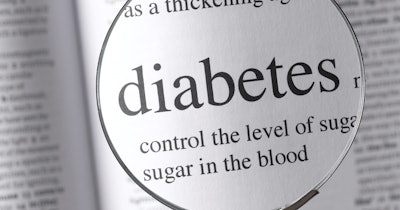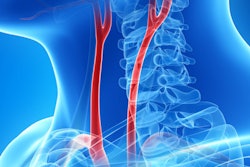
Vessel wall MRI shows that men with type 2 diabetes carry more brain plaque burden than their female counterparts, according to study results presented November 28 at the RSNA 2023 meeting.
The findings also indicated that women with the disease undergoing hypoglycemic drug treatment for it showed significantly reduced brain plaque compared to their male counterparts, said presenter Xuejiao Yan, MD, of Shaanxi Provincial People’s Hospital in Xi'an, China.
"The total and proximal burden of intracranial atherosclerotic plaque in male patients with type 2 diabetes with acute cerebrovascular disease were significantly higher than those in female patients," Yan told session attendees.
Previous research has shown that there are sex differences in the prevalence of type 2 diabetes and its associated diseases such as atherosclerosis and stroke. Yan's group sought to explore any plaque burden differences by sex in patients with type 2 diabetes and acute cerebral ischemia.
The team conducted a study that included 73 patients with type 2 diabetes who experienced acute cerebral stroke or transient ischemic attack due to brain arteries narrowed by plaque; these patients underwent vessel wall MRI exams between August 2017 and February 2023. Individuals in the study had A1c values equal to or higher than 6.5% and/or a fasting blood glucose level equal to or higher than 126 mg/dL (7 mmol/L). To estimate plaque burden, the investigators measured proximal and distal plaques of the middle cerebral artery M1-3, anterior cerebral artery A1-2, and posterior cerebral artery P1-2. They also compared patients by diabetes treatment status, investigating "the possible relationship between sex and intracranial atherosclerotic plaque burden and the interaction between treatment and sex," Yan said. Of the 73 patients, 49 were men and 24 were women.
Yan and colleagues found the following:
- Levels of the cholesterol-transmitting protein Apolipoprotein A-I, the amino acid homocysteine, and uric acid were higher in men compared to women, as was the smoking rate (p = 0.004, p = 0.016, p = 0.03, and p < 0.001, respectively).
- Men had higher intracranial total and proximal plaque burden than women, at 1.4 and 1.6 (with 1 as reference) respectively.
- Women's proximal plaque burden was reduced in those who underwent hypoglycemic drug treatment.
- Without hypoglycemic drug treatment, there was no difference in relative risk of cerebrovascular disease between men and women.
"Men with type 2 diabetes with acute cerebrovascular disease had significantly higher total and proximal plaque burden than women," Yan said. "Women had a significant reduction in intracranial proximal plaque burden after treatment for diabetes. In contrast, in the untreated setting, women would be at risk for proximal plaque burden, suggesting that antidiabetic treatment has a protective effect on the proximal intracranial plaque burden in women."
Since intracranial atherosclerosis (ICAS) is one of the leading causes of acute cerebrovascular disease, understanding type 2 diabetes and the sex-specific impact of treatment on the burden of ICAS "may provide insights into sex-specific strategy adjustments to reduce cerebrovascular risk," Yan concluded.



















